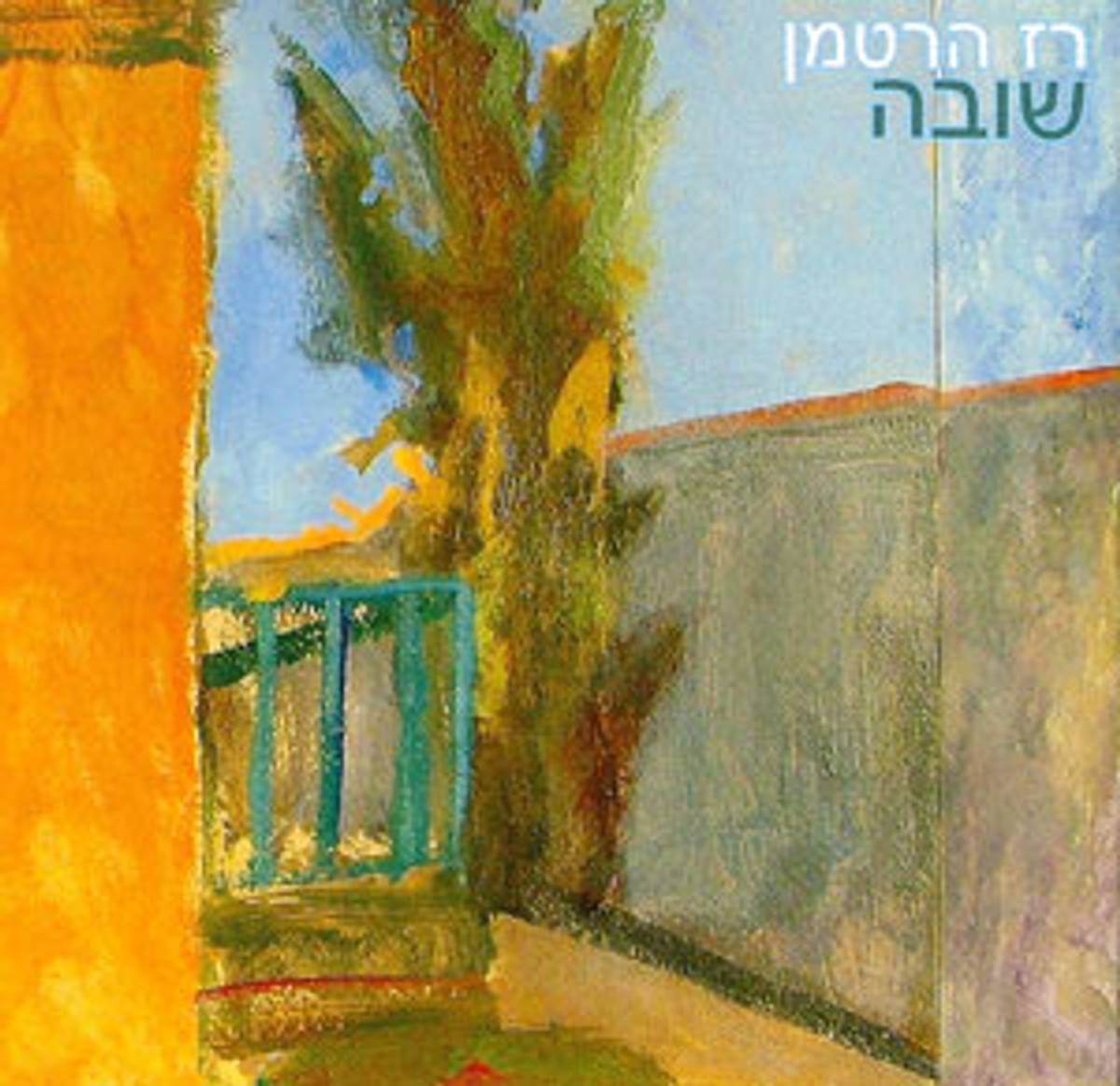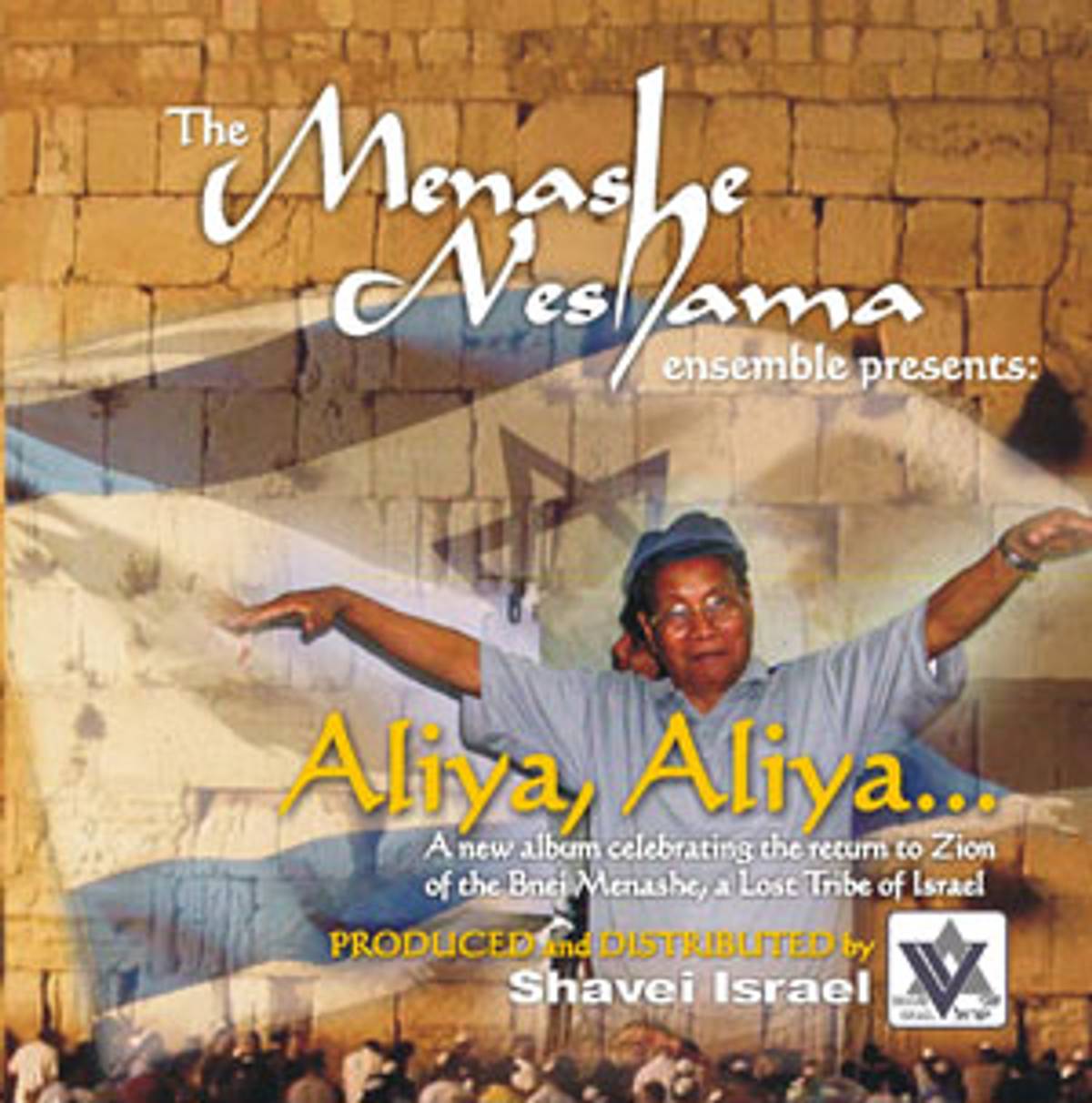Three minutes is about the length of my attention span—and the average pop song—and within its limits I have come to expect a dance party, a manic heavy-metal freakout, or an angry but ultimately hopeful statement about love. I could never be a product of the classical era. I need pop music. But there are some experiences that can’t be captured in a bite-size musical nugget.
Raz Hartman writes songs that, in length and in musical theme, straddle the division between classical, pop, and religious music. I wouldn’t call it music to meditate to, but that’s only because the term has come to mean music to fall asleep to. Rebbe Nachman of Breslov, Hartman’s spiritual inspiration, said other people tell stories to put themselves to sleep—Jews tell stories to wake themselves up. And Hartman’s second album, Shuva (his second) is definitely music to wake up to.
The first track, “L’shem Yichud,” takes its lyrics from Jewish liturgy. It’s not a prayer—well, not exactly. It’s a meditation (ahh, that word again) that leads into the first prayers of the morning service. Mostly, people take about ten seconds to say it, before coasting ahead to the morning blessings and the first Shema of the day.
Much of Hartman’s music hangs on his use of the piano for all its properties—melodic, harmonic, rhythmic. There are backup musicians of every stripe, hand-drum percussionists and cellists and horn players, but the instrumentation feels like an afterthought. Not that it’s unwelcome—“Yiram Hayam” certainly makes use of Hartman’s arranging skills, dropping a full band into the fourth minute of an eight-and-a-half-minute niggun (a wordless spiritual song), and “Bo’u,” with its Carlebach-esque two-step and pop-tinged horns, plays like one of Phish’s more inventive tracks.

Raz Hartman, in his daytime identity, is a rabbi at Simchat Shlomo (a yeshiva in the Nachlaot section of Jerusalem) and he conducts a weekly Friday night service. “Conducts” might be the wrong word, though—he is the one standing at the bimah, but all the voices blend together in my ear, and it’s nearly impossible to tell who’s leading and who’s following. People have labeled Hartman’s service as a Carlebach minyan, because there are scruffily-bearded men and long-skirted women, and everyone gets pretty enthusiastic—jumping on chairs, swaying with their eyes closed. At most Carlebach services, however, everyone sings the same five tunes over and over again. Here, the music is a combination of overheard or long-forgotten tunes, and melodies that Hartman has invented. My friend Mobius puts it best—“I’ve never heard those tunes before, and I’ll probably never hear them again. But while I was singing them, they were the only songs I’d ever known.”
Like the album itself, Hartman’s Friday nights consist of a mixture of traditional (but lesser-known) Breslov songs, other Hasidic melodies, and Hartman’s own compositions. But Shuva‘s centerpiece, the two-track title song, a combination of Hebrew spoken-word, soulful wordless moaning, and a sudden burst into ragtime dance, epitomizes the delicate balance between rocking out and inner contemplation that Hartman navigates so skillfully.
Listen to “Shuva II by Raz Hartman
Between India and Myanmar (formerly Burma), there’s a tribe of 9,000 people called—depending who you ask—the Chin, Kuki, Mizo, Zomi, or Bnei Menashe. And, oh yeah, they’re Jewish.
A hundred years ago, British missionaries found the tribe, and some reported that the local inhabitants were eating kosher food and doing the Sabbath thing, practicing a Biblical offshoot of the Judaism that we know—except, of course, that it had evolved in its own direction for the past millennium or so.

In the 1990s, groups of the Bnei Menashe started to make aliyah to Israel. When the inevitable questions arose concerning their lineage and heritage, one of the primary forms of evidence presented was their harvest song “Sikpui Hla,” or the Prayer of Miriam, which retells the dividing of the Red Sea.
Unfortunately, “Sikpui Hla” doesn’t appear on Aliya, Aliya, the new CD of Bnei Menashe songs. The album was recorded by the Menashe Neshama Ensemble and produced and distributed by the nonprofit organization Shavei Israel, who helped ease the immigration process for the 3,000 Bnei Menashe currently in Israel. Nonetheless, Aliya‘s fifteen tracks (some sung in Hebrew, some in their native language, Thadou-Kuki) make the case for an unexpected union of Southeast Asian and Jewish tunes, lyrics, and language in a way that you never thought was possible.
Despite the karaoke-like background music—or, in some instances, because of it—Aliya, Aliya is a fascinating album. “O Tzion Huilhi” uses biblical metaphors to allude to the idea of returning to an ancestral homeland: “Out of alien Egypt/Jacob’s House took leave/Judah has the part of Holy-place/And Israel that of a kingdom.” “Sokhen Ad” is a liturgical dirge reinvisioned as a Yanni-like New Wave jam; it’s hard not to imagine the synchronized dancing that must be going on in the background. Curiously, a number of the tracks (most notably the big-beat, title track, infused with triumphal horns, and the slow-jam “Im Eshkakhek Yerushalayim”) have beats and instrumentation that’s more than a little reminiscent of Haredi Jewish music. Right now the Bnei Menashe are at a fascinating moment in their history, not yet fully integrated into Israeli society and not yet “famous” in the way of other minority Jewish cultures, like Ethiopian Jews and the Black Hebrews of Dimona—and this collection captures that moment in all its uniqueness.
Listen to “Muollah A Thieng courtesy of Shavei Israel
Listen to “Aliya, Aliya! courtesy of Shavei Israel
My introduction to the world of Orthodox music was via Gavriel, this guy I knew from college who had the reputation of being the most Orthodox person on campus—not for being annoying or holier-than-thou; he was just really strict. He only wore black and white, and he didn’t listen to secular music. Naturally, I assumed his collection would be full of cantors hittin’ the Pavarotti notes.
To my befuddlement, all his CDs featured skinny young guys in bowties getting down to Casio keyboard disco beats. This was the world of Jewish religious music: smooth-groovin’ chazzans with Catskills stage personas, backed by Bar Mitzvah DJs.
A new Web site, Jewish Music Report, bills itself as “the largest collection of Jewish music writers on the Internet,” and though both Klezmershack and Shemspeed have considerable musical databases, JMR wins by the restrictions of its self-definition: here, “Jewish Music” refers to Orthodox singers, mostly male, although one of the best articles so far deals with the prohibition on women singing in the presence of men. The site is at its most fascinating when it takes an anthropological look at its own culture, examining the role of Jewish music in frum society.
Matthue Roth is a performance poet and author of the novel Losers. He is an associate editor at MyJewishLearning.com.